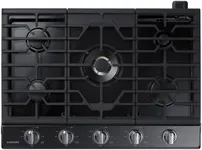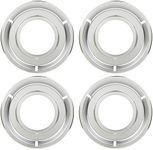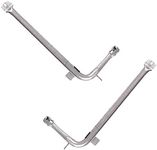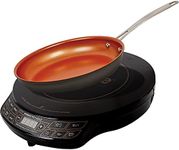Buying Guide for the Best Gas Ranges
Choosing the right gas range for your kitchen can significantly enhance your cooking experience. When selecting a gas range, it's important to consider various specifications that will impact its performance, efficiency, and suitability for your cooking needs. Understanding these key specs will help you make an informed decision and ensure you get the best fit for your culinary requirements.SizeThe size of a gas range is crucial because it needs to fit into the designated space in your kitchen. Gas ranges typically come in standard widths of 30 inches, but you can also find models that are 24, 36, or even 48 inches wide. If you have a smaller kitchen or limited space, a 24-inch model might be ideal. For larger kitchens or if you frequently cook for many people, a 36 or 48-inch range could be more suitable. Measure your available space carefully and consider your cooking habits to choose the right size.
Number of BurnersThe number of burners on a gas range determines how many pots and pans you can use simultaneously. Most standard gas ranges have four burners, but you can find models with five or six burners. If you often cook multiple dishes at once or need different heat levels for various recipes, a range with more burners can be very beneficial. For occasional or simple cooking, four burners might be sufficient.
BTU RatingBTU (British Thermal Unit) rating measures the heat output of the burners. Higher BTU ratings mean more powerful burners, which can boil water faster and sear meats more effectively. Burners typically range from 5,000 to 20,000 BTUs. If you do a lot of high-heat cooking, such as stir-frying or boiling large pots of water, look for a range with higher BTU burners. For everyday cooking, a mix of high and low BTU burners can provide versatility.
Oven CapacityOven capacity is measured in cubic feet and indicates how much space is available for baking and roasting. Standard gas ranges usually offer oven capacities between 4.5 to 6.5 cubic feet. If you frequently bake large items like turkeys or multiple trays of cookies, a larger oven capacity will be beneficial. For smaller households or less frequent baking, a smaller oven might be more efficient and quicker to preheat.
ConvectionConvection ovens use a fan to circulate hot air, resulting in more even cooking and faster baking times. This feature is particularly useful for baking and roasting. If you enjoy baking or want to achieve more consistent results, a gas range with a convection oven can be a great choice. However, if you primarily use the oven for simple tasks like reheating or basic baking, a standard oven without convection might suffice.
Self-CleaningSelf-cleaning ovens use high temperatures to burn off food residue, making it easier to clean the oven interior. This feature can save you time and effort, especially if you use the oven frequently. If you prefer low-maintenance appliances, a self-cleaning oven is a good option. However, if you don't mind occasional manual cleaning, you might not need this feature.
Control TypeGas ranges come with different control types, including knobs, touchpads, and digital controls. Knobs are straightforward and easy to use, while touchpads and digital controls offer more precise temperature settings and additional features like timers and presets. Consider your comfort level with technology and how much control you want over your cooking settings when choosing the control type.
Additional FeaturesSome gas ranges come with additional features like griddles, warming drawers, or smart connectivity. Griddles are great for cooking pancakes, eggs, and sandwiches, while warming drawers keep food warm until you're ready to serve. Smart connectivity allows you to control the range remotely using a smartphone app. Think about which additional features would enhance your cooking experience and choose a range that offers those options.
















